Kayaking the Beautiful Bow River in Banff
If you’ve ever driven the Trans-Canada Highway through Banff National Park you’ve seen the Bow River. It’s a beautiful ribbon of turquoise-blue that you can’t miss. I’ve wanted to go kayaking on the Bow River since moving to Calgary. It took me five years to finally do it.
The Bow River starts in the Rockies and flows onto the prairies to meet the Oldman River which then drains into the South Saskatchewan River. In Banff National Park there are three sections of the Bow River that are popular for paddling. We did a variation of the second section.
Sections to kayak on the Bow River in Banff
- Lake Louise to Castle Junction – a 22 km section with lots of riffles and Class I rapids. Allow 3-4 hours.
- Castle Junction to Banff – 32 km with lots of riffles and Class I rapids. There is one class III rapid you may have to portage. Allow 5-6 hours. There’s a campsite on this section.
- Bow Falls to Canmore – 23 km. Allow 4 hours.
This post includes some affiliate links. If you make a qualifying purchase through one of these links, I will receive a small percentage of the sale at no extra cost to you. Thank you very much for your support.
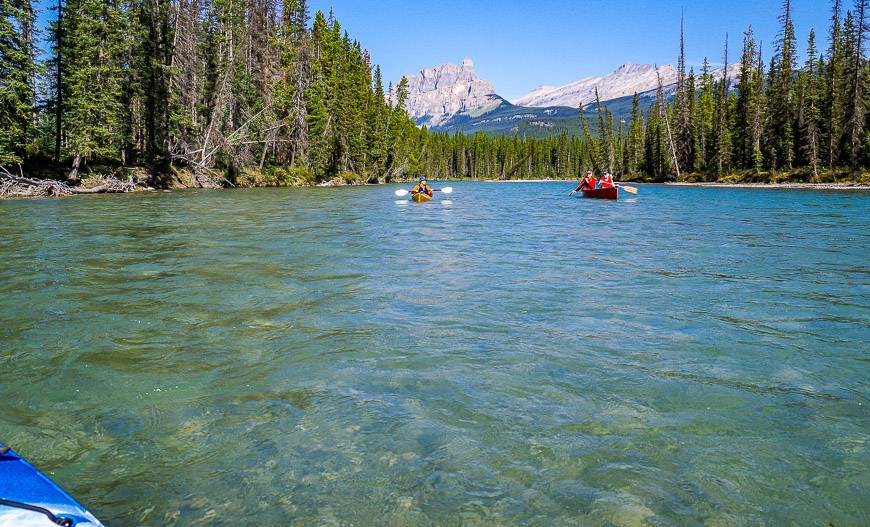
Would you like to save this?
Where do you launch on the Bow River for a Castle Junction start?
We kayaked about 28 km along a stretch of the Bow River beginning at Castle Junction with the actual launch within metres of the bridge just off the Trans-Canada Highway. Get off at the exit for Highway 93 and go north towards Castle Junction.
You’ll find a parking lot if you take the first right immediately after crossing the bridge shown in the photo below. It’s very obvious and it’s literally seconds after you get off the Trans-Canada.
Also check out the huge osprey nest on the bridge while you’re there. We could hear osprey but we didn’t see them.
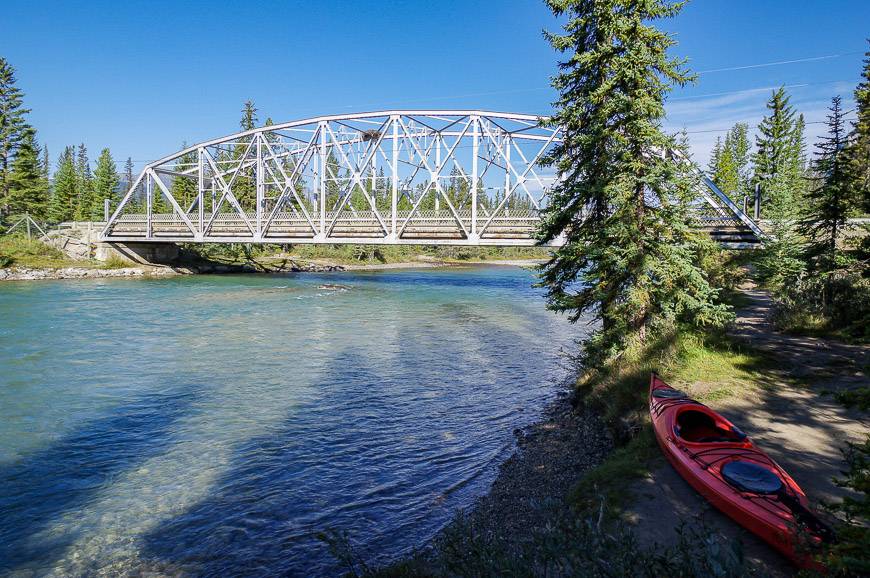
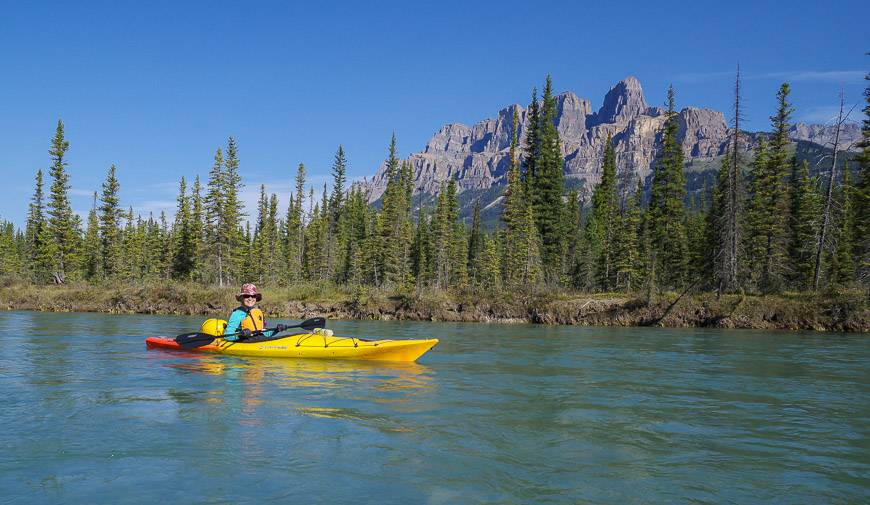
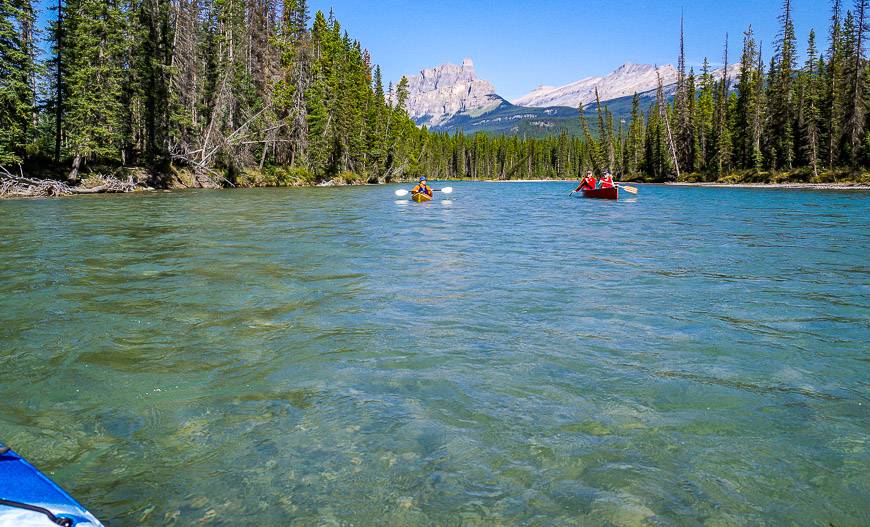
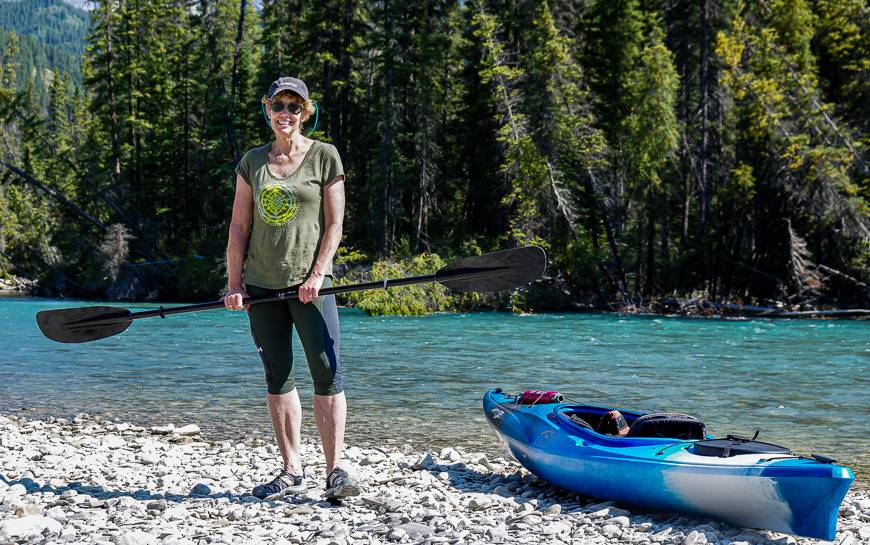
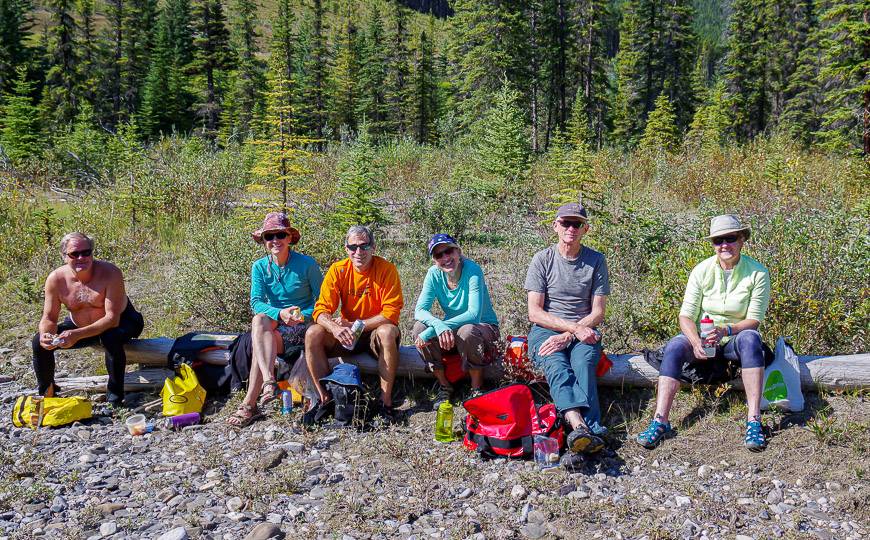
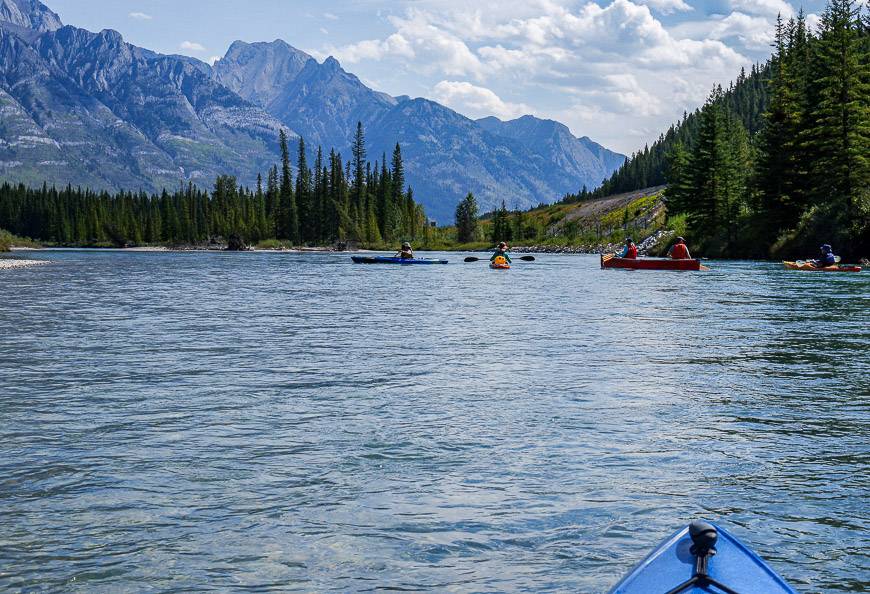
Paddling concerns kayaking the Bow River in Banff
For the most part, kayaking the Bow River is very easy. You do need to keep an eye out for the occasional rock and certainly sweepers, especially in the latter half of the paddle on this section of the river. There are lots of riffles and Class I rapids – all great fun providing you hit them head on.
The one major area of concern is where Red Earth Creek Rapids meets the Bow River, about two kilometres past the Johnston Canyon Campground. When you come around a big right hand bend there’s a big eddy where you can pull out. Then it’s a quick walk through the woods to scout the rapids. We did just that and decided they looked safe.
The short section ended up being a thrill – but if it was earlier in the season or you were unsure of your paddling ability, plan to portage the short distance.
The paddling after the Class III rapid (according to one reader it’s not class III but still use your better judgement) was a mix of riffles mixed with long stretches of almost calm water. Certainly the last hour required a lot more effort as the current had all but disappeared. We were lucky we didn’t have a head wind.
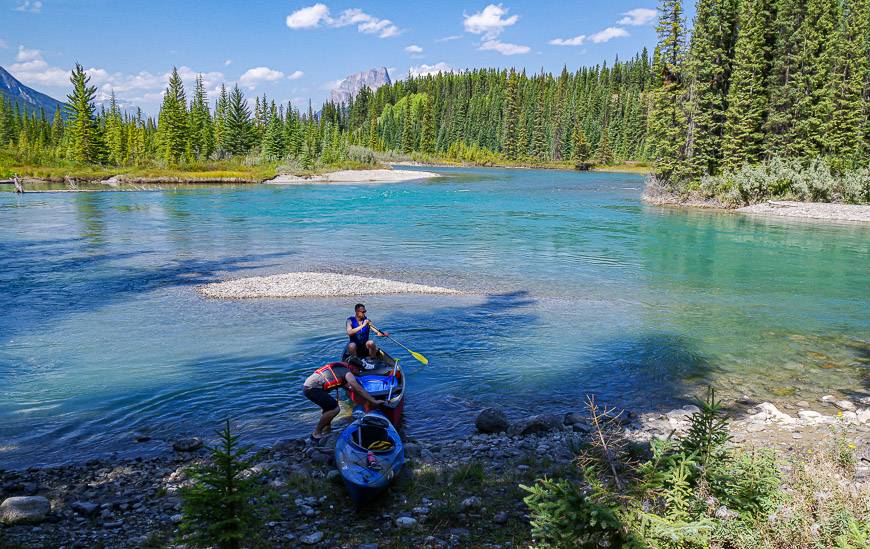
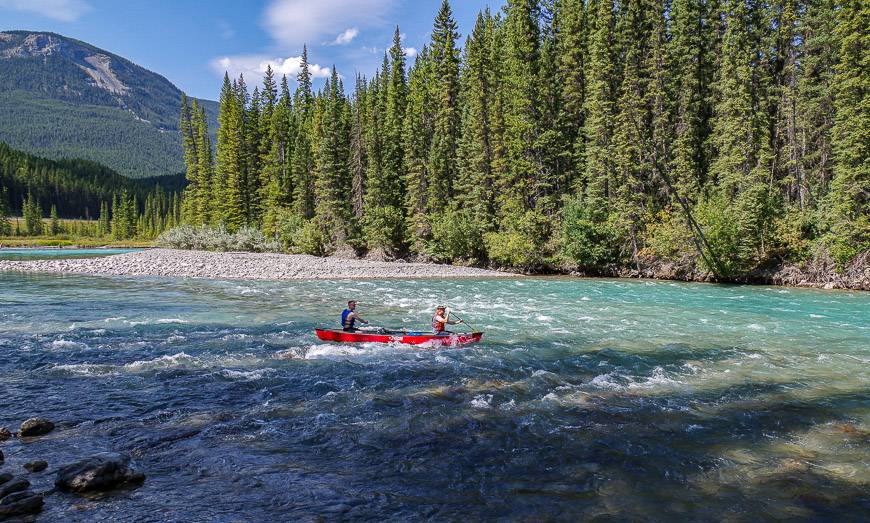
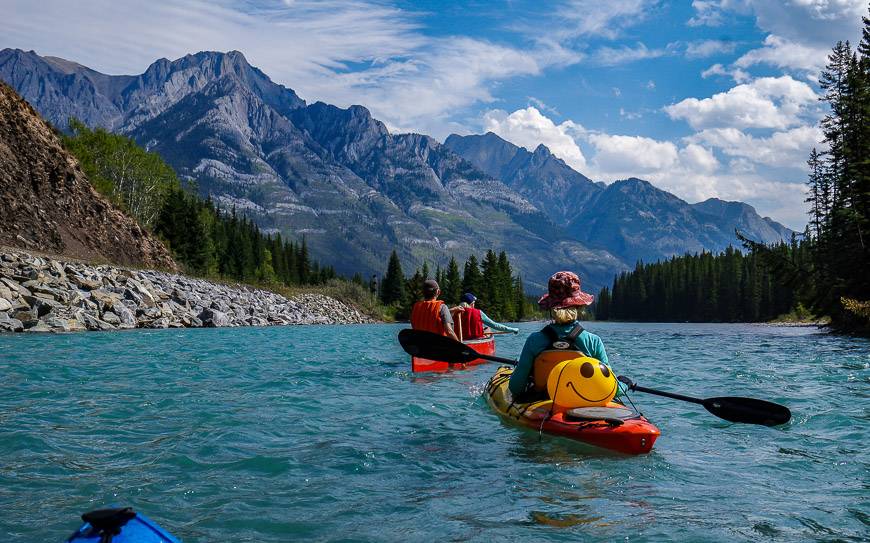
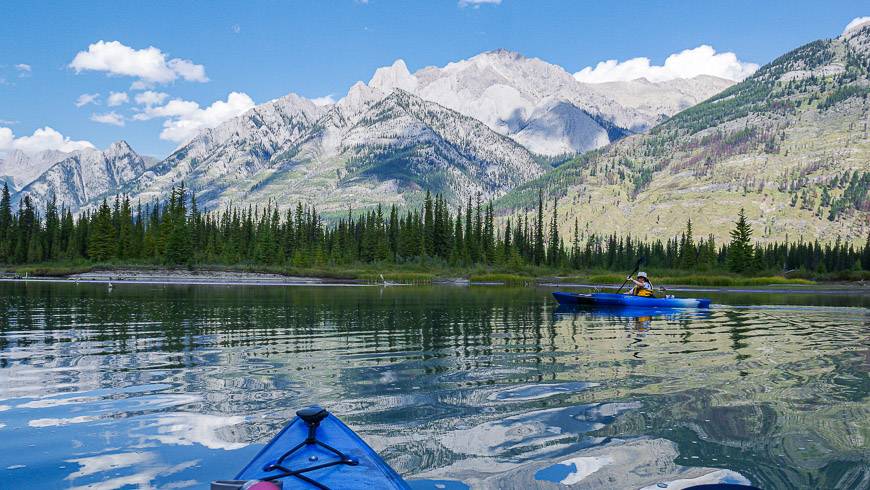
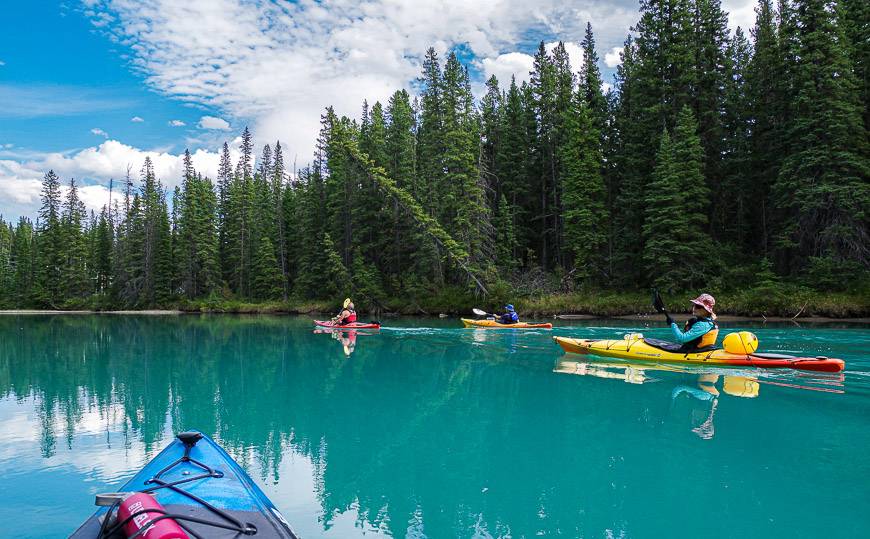
Where to get off the Bow River
We didn’t kayak the Bow River all the way to Banff. Instead we had left a vehicle in a pull-off on the Trans-Canada. It’s the first place you come to after the junction with Highway 1A as you head west. We could see the parking lot from the river and could easily get ourselves in position to get over and then off. The only downside was the muddiness of the pull-off location.
Kayaking the Bow River – either for a day or over a couple of days should you elect to start in Lake Louise is a marvelous one to two day adventure.
Its fun, beautiful and a great way to spend time with friends. If you don’t have a kayak you can rent one in Banff from the Banff Canoe Club – though they won’t let you reserve.
You’re probably better off renting from MEC, Sports Rent or the Calgary Outdoor Centre.
What to bring with you kayaking
Don’t forget a waterproof phone case.
A PFD like the one by Kokatat with several pockets to hold energy bars, knife is a necessity.
A pair of lightweight Neoprene gloves for cold, windy days.
A throw-bag and a paddle-float.
Further reading about paddling in Alberta
- A 3 Day Canoe Trip on the Milk River in Alberta
- Kayaking Maligne Lake in Jasper National Park
- The 3 Day Lac la Biche Canoe Circuit in Alberta
- Paddling the Peace River in Northern Alberta
- A 3 Day Canoe Trip on the Milk River in Alberta
Click on the photo to bookmark to your Pinterest.

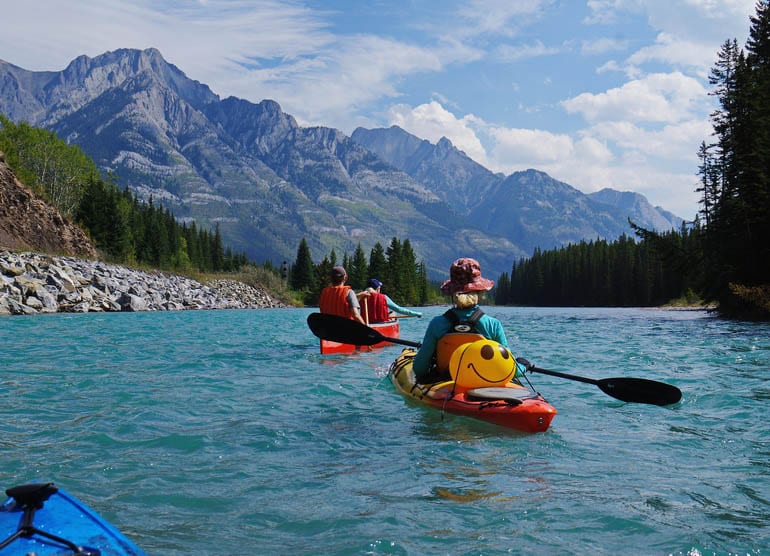
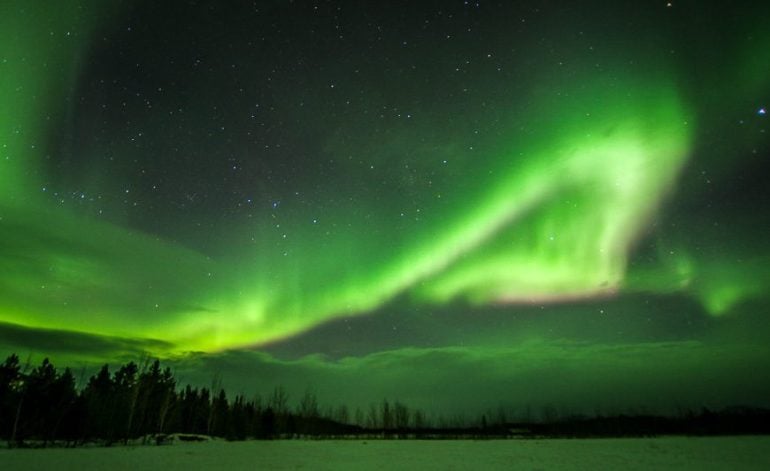
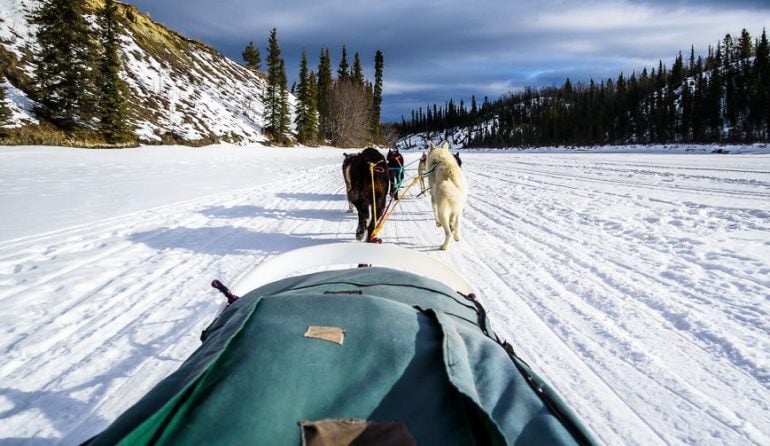
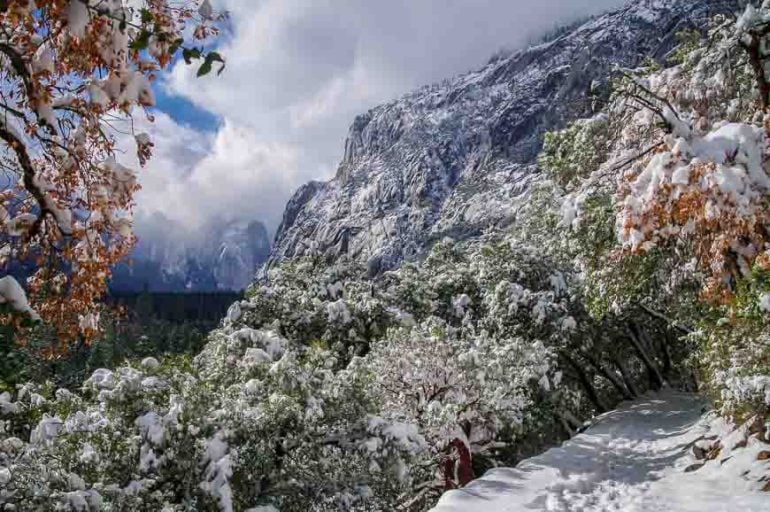
Hi Leigh, I just thought I’d let you know that I just kayaked from Castle Junction to Banff (July 23), and there are definitely not any class 3 rapids on that route. I’m not sure where you got that rating from, but they were class 1 at best. We (there were 3 of us) were disappointed as we have kayaked many class 2/3 rapids and were hoping to find something like that. I realize that if the water level was lower, they would have been a bit more exciting, but still nowhere near class 3.
Anyway, just thought I’d mention that in case others are expecting class 3 rapids as well.
Other than that, we got some good information from your site.
Thanks!
For people researching….
A 20yr old Parks Canada .pdf lists that section as Class 3 on Paddle Alberta’s website. Google “Red Earth Creek Rapids” for some old video showing a canoe doing this section. Definitely not zero risk of tip in a loaded canoe, but looks doable for anyone likely to attempt. I’m not going to waste anymore time worrying about that section. Hopefully doing Lake Louise to Canmore this summer.
As a blogger I like to err on the side of caution as there are always people who attempt without little or no experience. You’re right – most of the time it’s great, easy, completely doable. But I NEED to let people know there’s a possible class 3 section -and that can depend on the year.
Great info. Is castle to Banff doable with an inflatable kayak? Where are the class 3 rapids?
Thanks
@Stephen I have paddled inflatable kayaks and don’t think it would be a problem – if you’re an experienced kayaker. I don’t have a map of the rapids on the Bow River – though I do remember we were able to scout the rapids and they were after lunch, so at least halfway down. You could contact the Banff Canoe Club to see if they might have more info.
Hi Leigh
Very intersting post. Due to the fact that we’re not very experienced with canoes I’d like to know how you are able to start from point “A”, paddling to point “B”, having your Car right there waiting for you? 😀 Are there bus routes that can pick you up and bring you to your starting point (for example Lake Louise) after you parked at the pull off area?
Thx in advance for some insight Information 🙂
dieter
Hi Dieter,
We had a car shuttle. Contact Banff Lake Louise Tourism and ask about a taxi or shuttle.
Hi Leigh,
We are considering on camping at the Bow Valley campground in July. Is this section of the Bow River safe for kayaking (we are intermediate paddlers) ?
We have not booked a campsite yet, so would which section of the Bow River is best for kayaking? Would Banff National park be more suitable? We will reserve a campsite accordingly.
Thanks.
We are planning on doing the Bow river from Lake Louise to Castle junction and I was wondering were the start point is for that part of the paddle. Thanks your article made us plan this trip..Dan
@Dan I’m afraid I don’t know where the exact launch point is. I do know that there is a launch point beside the highway before Lake Louise – as I can picture it in my mind. Sorry I’m not more help. That section is considered to be a little more difficult – but still it should be fun.
Lake Louise Bow River put-in
51°23’52.8″N 116°08’45.4″W
Castle Junction Bow river take-out
51°15’59.3″N 115°55’34.6″W
Bow River backcountry camp Bo1c
51°14’26.8″N 115°51’09.1″W